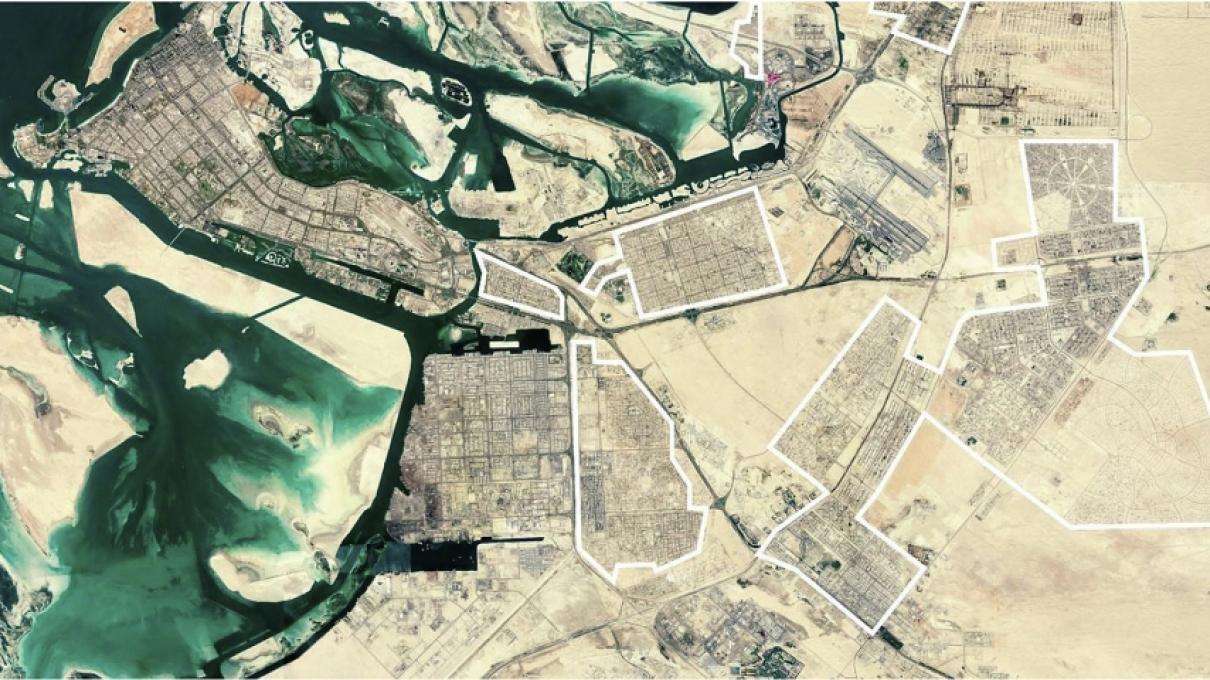3Qs on Low-Carbon Strategies for Suburban Development

Professor Alan Berger, and researcher associates David Birge and Sneha Mandan from the Norman B. Leventhal Center for Advanced Urbanism have recently concluded a two-year research effort examining strategies for achieving zero-carbon suburban development in hyper-arid conditions. Their analysis explored technology adoption to create new energy-water regimes, the potential role of landscaping in carbon sequestration, and the coupling of environmental and socio-cultural sustainability for better design. Their work has recently been published in Building and Environment, Landscape and Urban Planning, and in the Routledge Companion to Landscape Architecture.
Professor Berger is the Norman B. And Muriel Leventhal Professor of Advanced Urbanism, and Co-Director of the LCAU, David Birge is a research associate with the center and Sneha Mandhan is currently a doctoral candidate at the University of Toronto.
What was the impetus for this study?
The impetus for this project was to need to ensure all housing types can achieve low-carbon operations within a reasonable time-frame. Contrary to what we often read in the popular press, or are told within the halls of academia, the suburbs continue to expand around the globe and remain the preferred housing option for many households. The suburbs are simply not going away. We must, therefore, find viable avenues to rapidly transition low-density neighborhoods to meet or exceed carbon emission targets. Due to its hyper-arid and extremely hot climate, Abu Dhabi provides an extreme stress-test for developing such transitional strategies. From a purely systems point of view, if you can live sustainability in Abu Dhabi, you can probably do it anywhere. So, we gave ourselves a hard challenge in hopes that it would spur new solutions that haven't been adequately explored yet.
What was the most effective synergy between design and technology in seeking a carbon-neutral landscape? What does this mean for the sustainability of hyper-arid regions?
There are really three interconnected synergies we discovered. First, when energy comes from renewables (solar in this context) and desalinated water is produced through reverse-osmosis technology, a resulting unit of water from that coupled system has a carbon footprint that is easily offset by tree growth supported by that same unit of water. By including electric-cars and fixed batteries, intermittent energy from household roof-top solar panels can be largely buffered, allowing the household to tune energy demand, supply, and storage for their specific needs. That's the first synergy, and the current literature on neighborhood-scale carbon sequestration doesn't hint at this because it is too conservative and near-sighted.
The next critical synergy is how trees can be deployed to maximize their traditional benefits in a region where trees are now very limited. When planted in neighborhoods, trees provide a number of well-documented financial, health, and social benefits. We estimate that the cost of water from desalinated sources is mostly offset by the economic benefits trees provide. Of equal importance, however, are the social and cultural benefits of trees for providing privacy between houses, shading outdoor spaces for children and adults alike, and improving the overall aesthetics and walkability of neighborhoods.
To fully leverage the newfound capacities of trees and ensure synergies are fully realized while avoiding potential drawbacks (e.g. solar-panel shading), new neighborhood and parcel typologies had to be designed. To guide that design, we developed custom computational models in a 3D modeling environment. The result was an initial set of high-performing house designs that we estimate would be both carbon-neutral, and affordable to the typical Emirati household.
How may these best practices be transferred and adapted to other contexts? What are the potential implications of this research?
The prospect of large areas of artificially-watered landscapes in Abu Dhabi hypothesized in our study raises a larger question about urbanization in coastal arid regions generally (13% of the world's population). Should synthetic potable water be added to the long list of other synthetic metabolic flows (lighting, space conditioning, transport, agriculture) already needed to support cities everywhere? Is water unique in its costs and externalities, or, are we just so used to having limitless supplies of water that it "feels" wrong to add it to the list of manufactured goods when it is really no different? The answer to this question has broad implications not only for the future of established cities such as Abu Dhabi, but for the establishment of new urban and suburban areas in fast-growing arid regions globally. Furthermore, due to a lack of natural vegetation and thus historic in habitability, coastal arid regions may offer a critical release valve for population expansion as well as pure afforestation to combat climate change. Transferring the solutions developed for Abu Dhabi should only be easier in other contexts, as most regions will require less watering for trees, lowering the cost of implementation and increasing net sequestration of carbon. Recent tests in China to convert desert to arable land have proven successful, so agricultural applications of desalinated water are also possible, though outside the scope of our study.
Further information on this research can be found in Building & Environment, and Landscape and Urban Planning.


